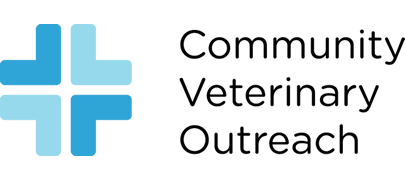College of Veterinarians of Ontario Update
“A day in the life of an Ontario veterinarian,” Part 2:
One Health… One Community at a Time: The Role of Veterinarians in Community Medicine and Outreach
By Michelle Lem DVM
The “One Health” initiative has achieved both acceptance and momentum in the public health community in North America and worldwide. The AVMA One Health Task Force noted that “the convergence of people, animals, and our environment has created a new dynamic in which the health of each group is inextricably interconnected” (July 2008). This approach recognizes the significant role the veterinary profession plays in the global health not only of animals, but also of humans and our environment. As such, many Canadian federal agencies, including the Public Health Agency, the CFIA, and CVMA’s Canadian Veterinary Reserve, are investing in One Health. But the individual companion animal veterinary practitioner might well ask, “How does One Health affect my practice?” I am one such veterinarian in Ontario, and I think that the answer lies in a shift of thinking from One Health to “One Community”—specifically, the community in which one practices. In my case, I have chosen to focus my graduate research on and provide veterinary services to one sector of my local pet-owning community—the group that is referred to as either homeless or “marginally housed”, or at high risk of homelessness. My Research. As research and science starts to bridge the gap between human and animal health, the social, emotional, and cultural effects of pet ownership are increasingly becoming recognized. The link between animal abuse and family violence and the fact that pets play a significant sentinel-role in the physical and emotional health of their human owners is well known. Although less studied to date, the link between pet ownership by socially vulnerable owners may also correlate—both positively and negatively—with the health outcomes of their owners. We are also starting to understand that for those who are socially marginalized—the homeless, the impoverished, the elderly, and victims of violence—the significance and often interdependence of this human-animal bond is even greater than it is for members of the average middle-class family. When an individual lacks family and/or social support, the pet becomes family, child, or best friend. As veterinarians, then, we have a unique opportunity to make a positive impact on the lives of those pet owners in our own communities who face such challenges. My research to date has shown that pet-owning individuals who are homeless will choose to not access shelter to which they cannot bring their pets. In addition, homeless dog owners have been shown to access health and support services much less than do homeless non-dog owners. The result is that this sub-population of the homeless is less engaged with the very services and programs that are in place to improve their own health and help get them off the street. In a series of qualitative interviews I conducted with street-involved youth and youth service professionals, we found that pet-owning homeless youth will typically put the needs of their pets before their own, and will forego food, shelter, employment, and basic services in order to take care of and stay with their animals. The inability to afford veterinary care is considered one of the leading stressors for pet-owning homeless youth, who—even without a pet—face considerable hardships and obstacles. Yet despite the liabilities that pet ownership brings for these youth, they consistently make choices to stay with their pets because of the deep emotional and social connection they have made, often experiencing love for the first time in their life. My Practice. Of all the health-care professions, veterinarians are rightly seen to be the most compassionate towards those who regard their pets as family members. In 2003, some colleagues and I decided that we had a responsibility to those in our community who have no family other than their pets. With an accredited companion-animal mobile, a small group of volunteers, and a few donations, we started providing pro bono preventive veterinary care for animals of the homeless at a local shelter. Over the past 8 years, this project has grown into monthly preventive-health clinics[1]; in addition to the mobile I operate in my own name, we now have a second accredited mobile for use in this work (this mobile practice is called Ottawa Community Veterinary Outreach Mobile Services). In this time, we have provided client education and preventive veterinary health care for over 1200 animals in our community—animals that otherwise would not have received any veterinary care. Clients are referred through community partnerships that include area shelters, community health centres, and public and mental health organizations, in order to ensure that we are reaching those most in need in our community. We believe that we are contributing to the health of our community by preventing potential consequences of lack of veterinary care that could include animal neglect, involuntary relinquishment of pets, zoonoses, and other negative effects on the emotional and/or physical health of the pet owners. By maintaining the health of the animal, we maintain and strengthen the health of the human-animal relationship, of which for the vast majority of our clients, is the most stable relationship they have ever known. Our success in the Ottawa area demonstrates that this program may be successfully modelled in other communities across Canada. Community Veterinary Outreach has broadened its mandate to support other projects in other communities which 1) improve the health and welfare of both animals and people 2) create multilateral co-operations between community organizations 3) contribute to the scientific data base on social issues involving animals, and 4) develop models for programs that can be reproduced in other communities. Our work in Community-Based Veterinary Practice (CBVP) is one way to practice veterinary medicine on a community level. Similar to the human model of community medicine, the focus of CBVP is on promoting the health and welfare of animals within our community as a whole. I feel privileged to be a member of a profession that plays such an important role not only in terms of animal health and welfare, but also in society at large. Veterinarians have a lot to offer both locally and globally. I think that One Health, one community at a time, is a good place to start.
click on the link below http://cvo.org/uploadattachments/UpdateMarch2011.pdf





